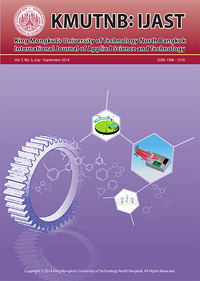Thermal Direct Joining of Hybrid Plastic Metal Components
Main Article Content
Abstract
Joining technologies for multi-material design become more important. A new technology to combine the advantages of adhesive bonding and mechanical joining is the Thermal Direct Joining of plastic and metal. In this process the metal joining partner is heated up to temperatures above the melting temperature of the thermoplastic. If the joining temperature is reached, the thermoplastic is pressed under defined force to the heated metal. The thermoplastic melts close to its surface and wets the metal. Afterwards the joint is cooled under pressure. The advantages of Thermal Direct Joining are short cycle times, high bonding strengths and high reproducibility and process stability. Heating by a permanent heated stamp is investigated. The joining equipment was further developed to shorten cycle times, to raise reproducibility and to investigate on optimal process parameters. The results show that high tensile-shear strengths up to 25 MPa can be observed in short term overlap shear tests for the combinations of aluminium or steel with polyamide 6, polyamide 6 with 30 wt.-% short glass fibre reinforcement or thermoplastic fibre reinforced plastic with polyamide 6 matrix.
Article Details
How to Cite
Haberstroh, E., & Sickert, M. (2014). Thermal Direct Joining of Hybrid Plastic Metal Components. Applied Science and Engineering Progress, 7(3), 29–34. retrieved from https://ph02.tci-thaijo.org/index.php/ijast/article/view/67445
Issue
Section
Research Articles


